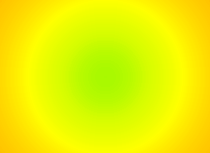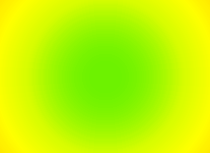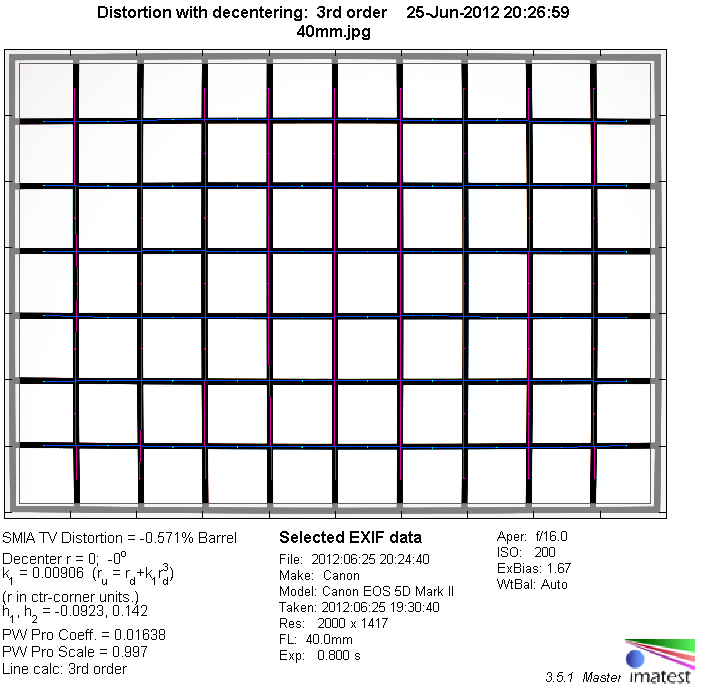ultimitsu wrote:
Anders W wrote:
Yes. And here's the basis for my judgment. These are processed from the DPR RAWs using LR 4.4 with everything at default except sharpening, which is reduced to zero (as DPR does). The first is a 100 percent crop from the E-M5, the second is the same but upsized to more than 100 percent to match the display size of the same crop from the RX1, and the third is the RX1 at 100 percent.
It need to be said that DPR used a 50mm on OMD, resulting in a 100mm FOV, RX1 with a 35mm lens needed to a much closer to the scene. And because the scene is three dimensional, the further away to the edge the image the worse the IQ becomes for RX1. In other reviews RX1's edge performance is generally better.
Oh that's interesting. Can you please explain to us for exactly what optical reasons the three-dimensionality of the scene would disadvantage the RX1 in this comparison when it comes to edge performance. We are all waiting with great anticipation.
You had to pick edge crops to prove your point, understandable. But here are some other crops
I didn't have to pick edge crops but I preferred not to pick an area where either camera was handicapped by moiré. You apparently found that necessary though so let me reciprocate. Great performance here by the RX1, wouldn't you say? ;-)
So could you please describe how those measurements were obtained and what they refer to (e.g., demosaicing software and settings used, contrast criterion, measurement procedure, and sampling of resolution across the frame).
There is no need to understand Pmp to get a good idea of how lenses perform. all you have to do is actually check the test data.
So you are saying that there is no need to understand a measure in order to use or rely on it. Any measure will do no matter exactly what it measures and how.
I never said that at all, the only way you could have thought that is when you were not thinking at all.
As everyone can see for themselves, you said there is no need to understand "Pmp" (P-MPix) and that all you have to do is look at the "test data".
Now, in order to measure anything, you need both a definition of the quantity you are measuring and data measuring that quantity. I asked you about the former and you respond by reference the latter. A perfect example of a non sequitur.
What I said is you do not need to look at PMP, the field map gives you a much better idea of resolution performance.
So in what way is "acutance" (the measure used in the "field maps") better than P-MPix (the measure used in other maps)? Or are you choosing between these technically undefined measures merely on the basis of what type of diagrams they happen to be presented in?
Good luck in convincing others that this is a reasonable proposition.
You just convinced me that you cannot read.
You just showed everyone once more that you have no idea of what you are talking about.
BTW: The charts you pasted do not show P-MPix, but "acutance", another of the technically undefined measures DxO has recently started to play around with.
Oh really?
http://www.dxomark.com/index.php/About/In-depth-measurements/Measurements/Sharpness
Oh yes really. That tells us absolutely nothing about how P-MPix or DxO "acutance" is technically defined and measured, does it? For example, please explain to me how these two measures compare to the MTF-50 resolution figures reported by other sites, e.g., LensRentals.
While on the topic of definitions and measurement. Exactly how do you define "massively sharper"?
greener = sharper, yellower = softer, happy?
Sure. I am sure everyone finds your response entertaining. ;-)
And "massively"?
You are welcome to argue that the difference in sharpness is not "massive" for you, I accept that.
I think noone denies that the RX1 has a decent lens. But to speak of "massive" differences in sharpness between the RX1 and good MFT lenses on current MFT bodies (the PL 25/1.4 is not a personal favorite of mine;
But PL25 is exact what TrapperJohn pitted against RX1 and claimed there is no difference ("flushing $1400 down the toilet").
To me, the difference in sharpness between RX1 and PL25 wide open is massive. i find it equally laughable that you cannot see the difference between RX1 and OMD's resolution in general.
Fools are known to be easily entertained.
Go back read the line you are quoting:
"By the way, an R1 with a removeable mount would need all new glass. Expensive, large glass."
"Why must it have large glass? why can it not have a tiny 40 F2.8?"
To which I responded, in my very first reply to you in this thread:
"What would be the point if you can shoot with equal quality with the Pany 20/1.7?"
Idiotic, isnt it?
Your responses to my questions, yes.
Because as we have subsequently found, 40mm/2.8 FF lens that is better than the panny 20/1.7 is very possible. the issue is not about does the sony version exist or can sony use the canon lens.
"We" have found no such thing. You claimed it but were proven wrong.
the 20/1.7 on an MFT camera, stands up very well to the 40/2.8 on a Canon FF.
No it doesnt.
the 20/1.7 has much more CA and distortion than the 40/2.8
Apparently you overlooked what I already said in my previous reply (which you omitted from the text of mine that you quote). .....
I did not overlook that,
Yes you did. What's the point of repeating that the 20/1.7 has more CA and distortion (prior to correction) when I had already said:
"Distortion and CA? Both are auto-corrected when the 20 is used on a Pany body, with virtually no downsides. Not an issue."
I responded to it, it is you who were too busing doing the overlooking. see the bottom of your own post.
I look at the bottom of my own (previous) post and find the following exchange:
You had already said: "Are you crazy? Of cause there are downsides. CA and distortion are never desirable traits in a lens because they eat up resolution and contrast. Sure, they can be mitigated better today than they were 5 years ago, but they are still a flaw to a lens and In-body correction doesn't give you points because any raw processor can do that better."
I responded: "This just demonstrates how little you know. One advantage of software-correction is that you can allow slightly more lateral CA and distortion in order to have the lens perform better in other respects, that cannot easily be corrected ex-post without downsides, for example, MTF(resolution/microcontrast). And as the evidence shows, the Panasonic 20/1.7 does better with regard to MTF than the Canon 40/2.8.
One advantage of mirrorless is that it makes it easier to take advantage of the benefits of software-correction. A DSLR has difficulties with that since the effect of distortion-correction cannot be shown in an OVF."
Resolution wise the 20/1.7 is good on its own, but when you compare the resolution you get from the m43 camera that is using it against the resolution you get from an FF camera that is using the 40 F2.8, the 20/1.7 is threshed. you read the numbers on PZ. 3980 centre, 2950 extrame corner for the 40/2.8, 2462, 1911 for the 20/1.7.
Apparently you overlooked the big warning sign on the front page of Photozone lens tests:
Apparently you did not read the paragraph you quoted. I made it clear that "Resolution wise the 20/1.7 is good on its own,"
BUT
"when you compare the resolution you get from the
m43 camera that is using it against the resolution you get from an
FF camera that is using the 40 F2.8, the 20/1.7 is threshed"
This is the system vs system comparison.
You still don't get it, do you. So let me try again. For reasons pointed out in my previous reply, the Photozone results are incomparable even if it's "systems" i.e., body-lens combos rather than lenses alone, we are talking about. The figures from LensRentals that I quoted do not suffer from that shortcoming. Here are the figures for the system comparison again:
Canon 40/2.8 on 5DII (21 MP)
f/2.8 870/775
Panasonic 20/1.7 on E-M5 (16 MP)
f/1.7 870/735
f/2.8 1050/875
Get it this time?
And last but not least 40/2.8 is 1/2 stop faster too.
No it isn't. The 20/1.7 is one and a half stop faster. This in turn suffices to more than make up for the difference in sensor area for reasons already pointed out in my second reply to you in this thread. Here it is again for your reference:
But that is clearly wrong, because m43's sensor area is 4 times smaller than FF. In FF equivalent terms, the panny is 40mm/3.4, against the hypotheticaly Sony 24mp FF system camera that sports the hypothetically 40mm/2.8 lens, it is 1/2 stop slower.
Please make at least a rudimentary effort to comprehend. The 20/1.7 is one and a half stop faster (in terms of exposure, which is what lens speed conventionally refers to). Since it is used on a smaller sensor, it collects 1/4 the light at the same exposure. This in turn suffices to make up for the difference in sensor area compared to Canon FF (which cannot even match the DR of the E-M5 at base ISO). How hypothetical lenses on hypothetical cameras will do is anybody's guess.
The only current 40mm ff lens is canon 40/2.8 STM, which also happens to be miles superior than panny 20/1.7, and half stop faster.
Superior in what way?
Lets see...
Distortion? CA?
We were talking resolution and you turned out to be clearly wrong in that regard (see the results below).
No, you lost track of what you were talking about. You asked:
"What would be the point if you can shoot with equal quality with the Pany 20/1.7?"
The question refers to quality, clearly is not limited to resolution.
No I didn't lose track of anything. You did. You are mixing quotes from an earlier part of our exchange (focused on quality more generally) with a later part (focusing on lens quality specifically). Please make at least a rudimentary effort to keep track of such elementary things.
Allow me to fill in the dialog you quote from prior posts just a little bit.
U: how about massive more resolution at F8?
A: Massive more resolution at f/8? What evidence?
U: how about massively sharper image wide open?
A: Massively sharper images wide open? What evidence?
U: Why must it have large glass? why can it not have a tiny 40 F2.8?
A: What would be the point if you can shoot with equal quality with the Pany 20/1.7?
U: That simply is not possible. Sny 24mp ff sensor is miles superior than any m43 sensor. The only current 40mm ff lens is canon 40/2.8 STM, which also happens to be miles superior than panny 20/1.7, and half stop faster.
A: Superior in what way?
Certainly not when it comes to what you and I are discussing here, i.e., MTF values (resolution/microcontrast). Below you find directly comparable test data from LensRentals (line pairs per image height at MTF-50, center/average, based on unsharpened output from RAW files):
U: Lets see... Distortion? CA?
A: We were talking resolution and you turned out to be clearly wrong in that regard (see the results below).
Distortion and CA? Both are auto-corrected when the 20 is used on a Pany body, with virtually no downsides. Not an issue.
U : No, you lost track of what you were talking about. You asked: "What would be the point if you can shoot with equal quality with the Pany 20/1.7?" The question refers to quality, clearly is not limited to resolution.
A: No I didn't lose track of anything. You did. You are mixing quotes from an earlier part of our exchange (focused on quality more generally) with a later part (focusing on lens quality specifically). Please make at least a rudimentary effort to keep track of such elementary things.
Hmm. It seems the eye-doctor is not the only one you need to visit. ;-)












